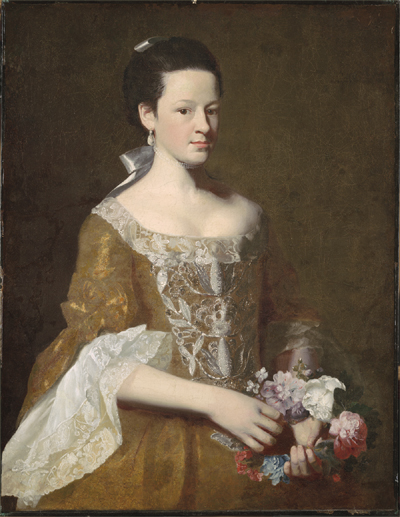
|
View Larger Image |
Dorothy Murray, PortraitAt the time she sat for this portrait, Dolly, as her family called her, had been living with her aunt, Elizabeth Murray, for several years. James and Barbara Murray decided to send their oldest child to Boston to live with Elizabeth. She had tried to persuade them that Boston offered better educational opportunities than did North Carolina. Ultimately, they agreed and placed their first born in Elizabeth's care. While living with her aunt, Dolly studied reading, basic accounting, dancing, sewing, and fine needlework from several different teachers, including Elizabeth's friend and protègé, Jannette Day. Elizabeth and her niece became very close, and Dolly eventually came to refer to her aunt as being like another mother to her. Here, she wears the attire of a fashionable young lady, with an embroidered stomacher on the front of her gown, strands of pearls around her neck, and fine ruffles attached to her sleeves. As an adult, a difficult marriage to John Forbes, separation from her spouse, and the American Revolution all presented challenges to Dolly Murray. She raised three sons, tangled with revolutionary authorities, and stayed close to her aunt in Boston. For more on Dorothy (Dolly) Murray, see Patricia Cleary, Elizabeth Murray: A Woman’s Pursuit of Independence in Eighteenth-Century America University of Massachusetts Press, 2000. |
||
|
|||
 Dorothy Murray, portrait by John Singleton Copley, ca. 1759-1761. Courtesy, Fogg Art Museum, Harvard University Art Museums, Gift of Mrs. David Simmons
Dorothy Murray, portrait by John Singleton Copley, ca. 1759-1761. Courtesy, Fogg Art Museum, Harvard University Art Museums, Gift of Mrs. David Simmons

